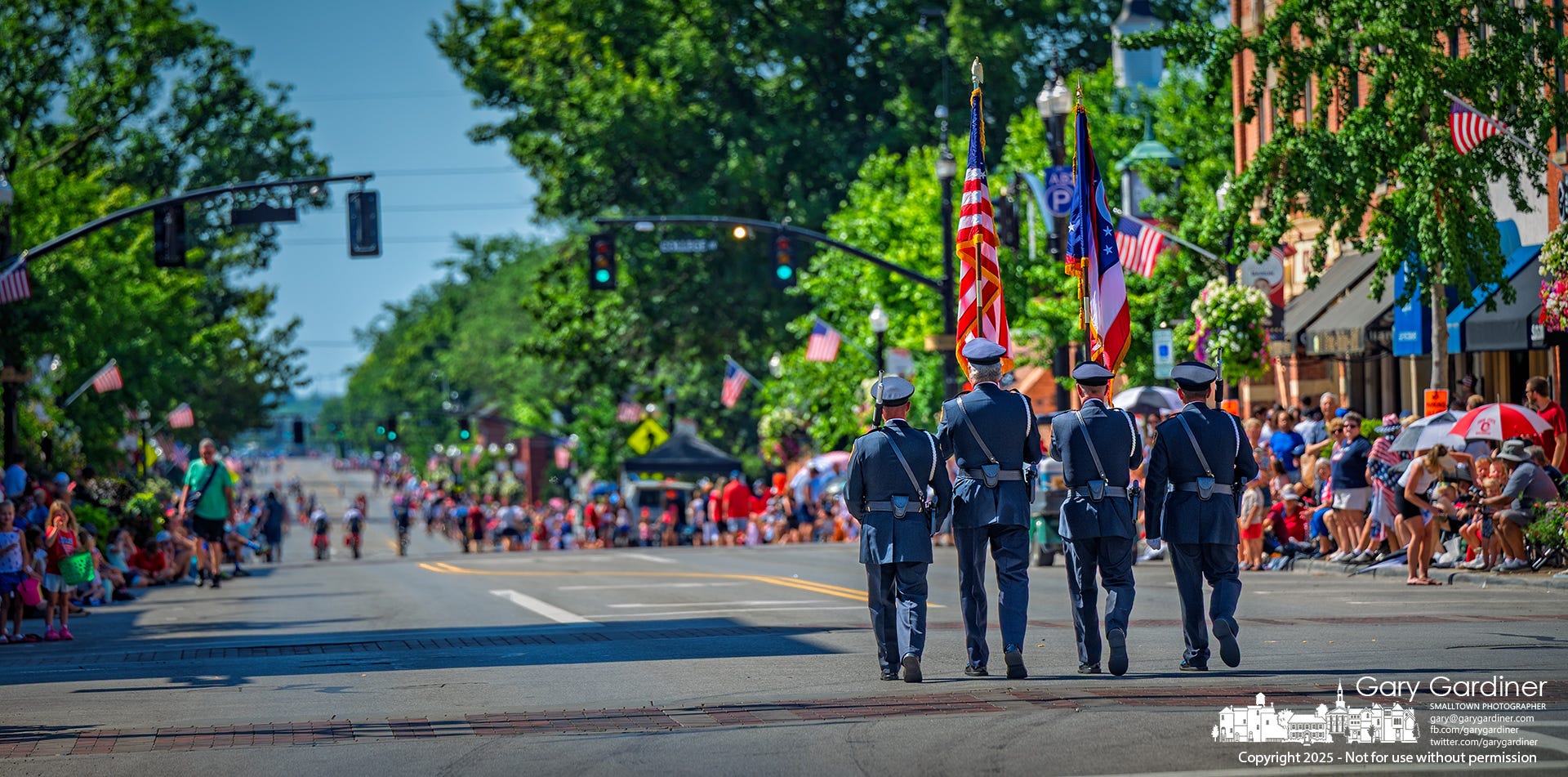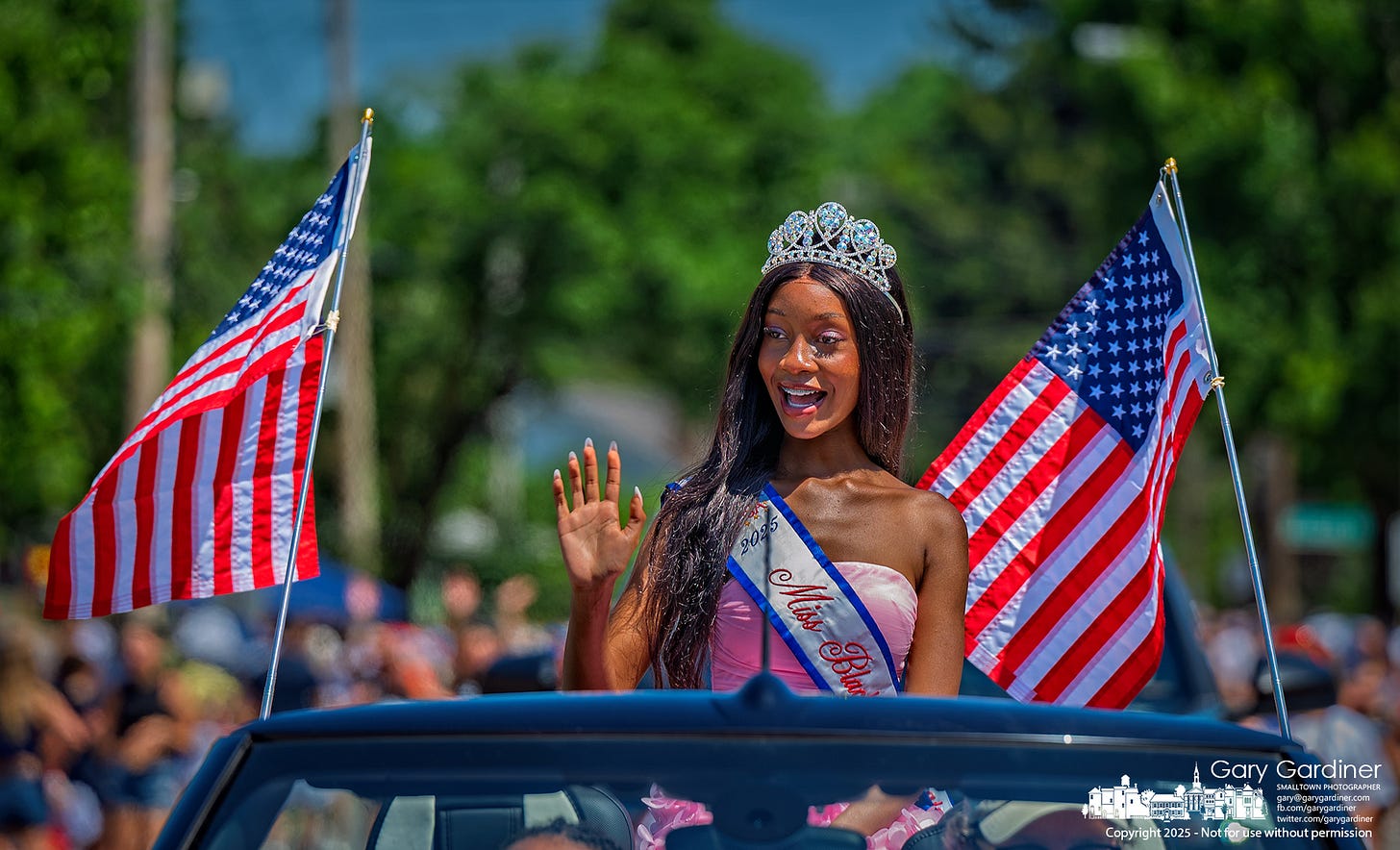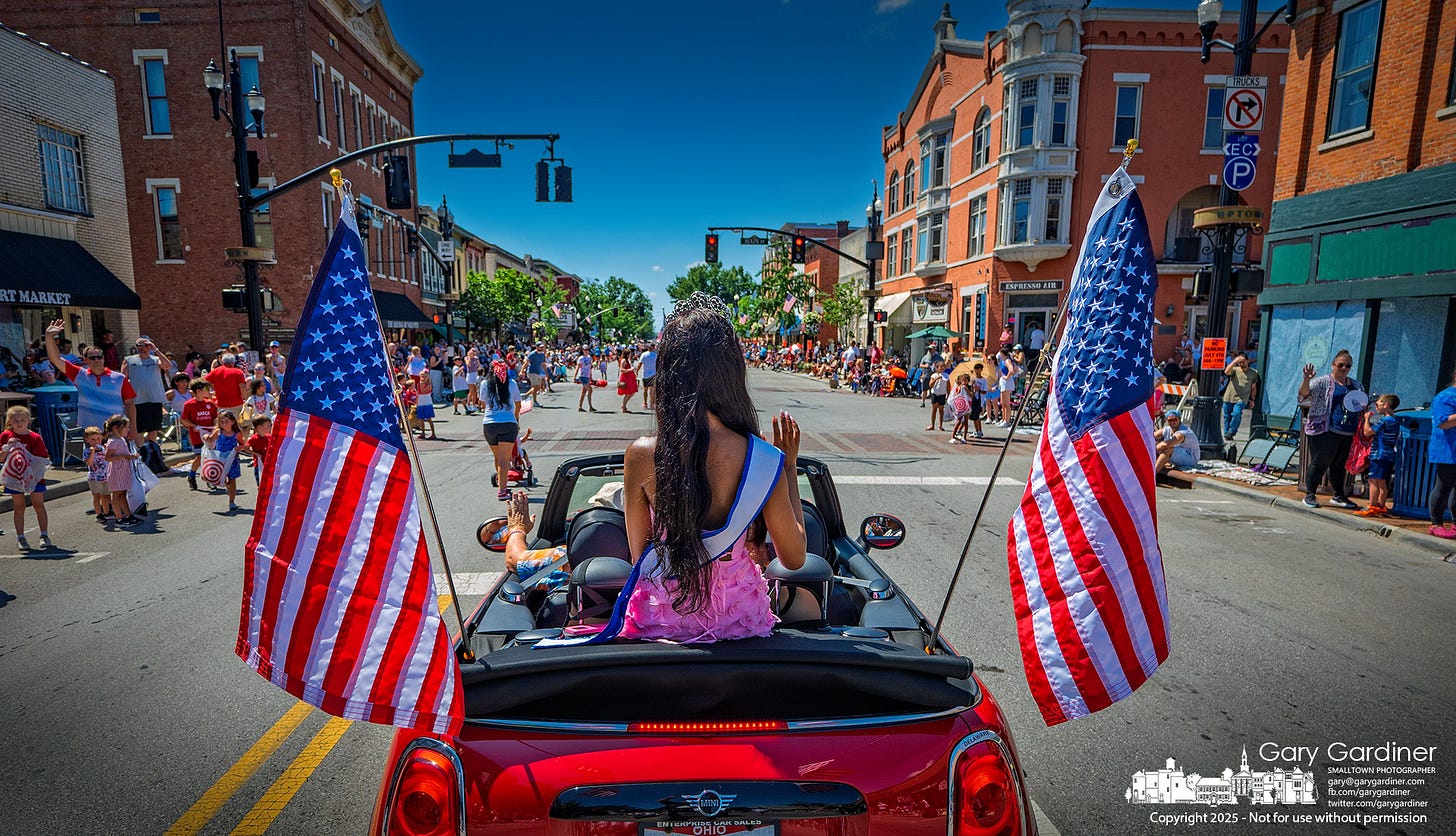Leading From The Rear
Four police officers march in step down State Street, flags held high. Their uniforms and colors serve as the opening lines of the story. The crowd lines the sidewalks, shaded by trees and brick storefronts. The road stretches out before them, a long corridor of small-town tradition on the Fourth of July.
Photographing this scene from behind feels counterintuitive. Most people want to see the faces leading a parade, looking for expressions of pride and joy. However, the backs of the honor guard convey a quieter sense of purpose in their measured stride and forward-tilting flags. It’s less about performance and more about continuity. Year after year, they take the same steps down the same street.
This perspective carries over to another photo from the morning. A parade queen glides past in a convertible, her sash catching the wind. While the front view shows her smiling and waving, the view over her shoulder tells a different story. The flags beside her guide the viewer up the street, and the crowd becomes a sea of waving hands rather than just faces. You feel as if you’re part of the procession rather than merely watching.
This approach transforms the experience from witnessing an event to inhabiting it. Front-facing portraits emphasize recognition, while the rear view invites participation. You step into the frame, seeing what the subject sees and feeling the movement forward.
Even traditional scenes, such as an honor guard leading a parade, a queen passing rows of children, can feel fresh from a different perspective. Stand behind your subjects. Let the road stretch out before them, and their backs lead you into the picture. Sometimes, the truest sense of occasion lies not in remembered faces but in the shared direction we face together.
Next time you photograph a parade or celebration, consider stepping away from the usual curbside spot. Find the view from behind. You may discover that the real story is unfolding just ahead of you.
Key Takeaways
Perspective Creates Involvement
By photographing from behind, you feel as if you’re walking with them rather than watching them pass. This viewpoint brings a sense of participation and shared purpose.Symbolism in Simplicity
The uniforms, flags, and synchronized stride communicate respect and tradition without relying on facial expressions or gestures.Depth and Context
The long, tree-lined street stretching into the distance emphasizes the parade’s place in the community, showing how this moment fits into a larger story of place and ceremony.Quiet Dignity
The lack of overt emotion in the scene highlights the solemnity and discipline of the honor guard, contrasting with the more celebratory elements of the parade.Leading Lines and Composition
The lines of the street, the spacing of the officers, and the flanking buildings naturally guide your eye forward, pulling you deeper into the scene.Shared Direction
Shooting from behind emphasizes movement and a collective journey, rather than a single moment of recognition. It feels like the beginning of something rather than the culmination.
PhotoCamp Daily is not a newsletter about the technical skills required to be a good photographer or photojournalist. There are many videos, self-help books, training courses, and classes, and then there is the power of social media as an instructional tool.
PhotCamp Daily is about learning to experience making good photos and better observe subjects and their relationship to the story. Learning to express yourself better will become a collective view of your world and the new experiences you will encounter.
PhotoCamp Daily is always free! But you can pledge support at any time.
Consider subscribing to The Westerville News and My Final Photo News. Krista Steele's Into the Morning is also recommended.
My Final Photo News is a reader-supported publication. To receive new posts and support photography and commentary, consider becoming a free or paid subscriber.





always the teacher.....the best!